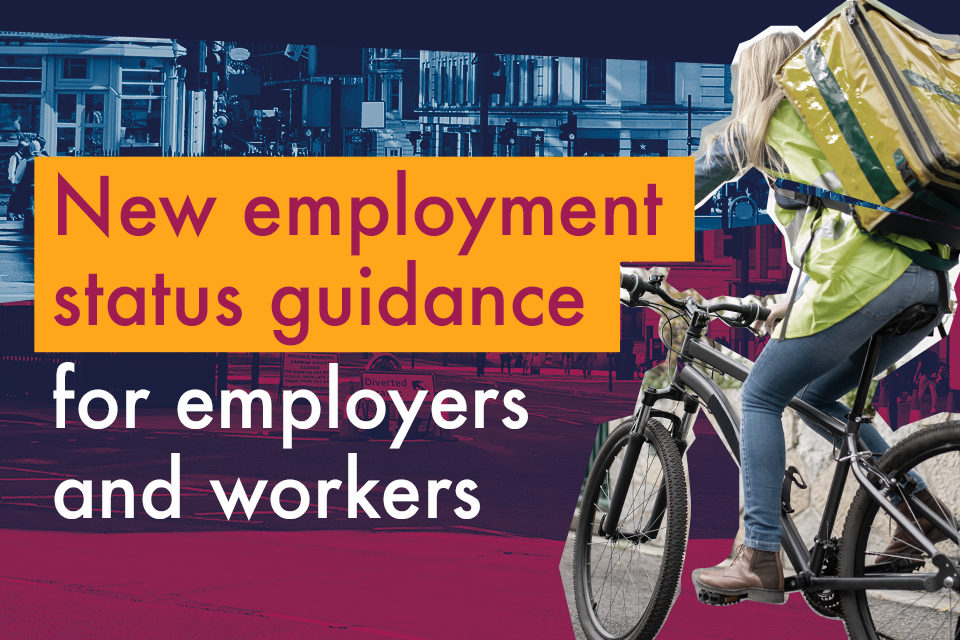
New guidance brings clarity on employment status for workers and businesses
Published By GOV.UK [English], Mon, Jul 25, 2022 5:15 PM
New government guidance will act as one-stop-shop for individuals and businesses to understand which employment rights apply to them
gig economy workers set to benefit the most, as fresh guidance enables them to check their workplace is treating them fairly
Business Minister Jane Hunt said: “Today we are tidying up the rules, helping workers to find out if they are being treated fairly by their workplace.”
Businesses and workers, particularly those in the gig economy, will benefit from greater clarity over their employment status, thanks to new guidance published by the government today (Tuesday 26 July).
A person’s employment status is what defines the rights and employment protections they are entitled to at work including pay, leave and working conditions, and therefore dictates the responsibilities that an employer owes to that worker.
Today’s new guidance brings together employment status case law into one place for businesses and individuals to access. This will support workers by improving their understanding of what rights they are entitled to at work, enabling them to have informed discussions with their employer and take steps to claim or enforce them where necessary.
Crucially, the guidance also clarifies the rights that gig economy workers are entitled to – from the national minimum wage to paid leave - while offering them the same degree of flexibility to take on additional work to top up their income, if they choose. This clarity comes following the landmark Uber Supreme Court judgement which held that individuals in the gig economy can qualify as ‘workers’, meaning they are entitled to core employment protections.
The new guidance includes advice for micro businesses, start-ups and SMEs that have less capacity and legal expertise to understand the law. By reducing the risk of companies being fined by rules they have broken unknowingly, it will inject confidence into businesses to support their staff and stimulate economic growth. Equally, the guidance will help to curb unscrupulous employers from attempting to exploit the system in order to save on employment costs.
Business Minister Jane Hunt said:
Today we are tidying up the rules, helping workers understand their employment rights and find out if they are being treated fairly by their workplace.
Importantly, this one-stop shop guidance is not just for workers – it will also give businesses the confidence and the tools to better support their staff, helping to increase productivity and drive growth.
By featuring real world examples of what an individual’s working day or contract may involve - and how that translates into their employment status - this new one stop shop guidance will help to ensure that work pays fairly.
Getir General Manager Kristof Van Beveren said:
Getir employs thousands of people in the UK in the superfast grocery delivery sector. Our growth plans will see us employ thousands more in the coming months and years and we welcome any guidance, such as this, that can help us contribute further to the UK’s economic growth and create more jobs.
The guidance is being published alongside a response to a consultation on employment status, where many respondents called for additional clarity around the employment status boundaries and examples of how to apply the rules to different scenarios.
The UK has a ‘3-tiered’ employment status framework, broken down by employee, worker and those that are self-employed. This system helps to create a flexible and dynamic labour market but has led to some individuals not understanding their employment status.
The guidance encourages workers to contact Acas for further advice should they think their employment status is wrong, and to engage their employer in conversations about their rights before taking further steps to hold them to account if needed.
Press release distributed by Media Pigeon on behalf of GOV.UK, on Jul 25, 2022. For more information subscribe and follow